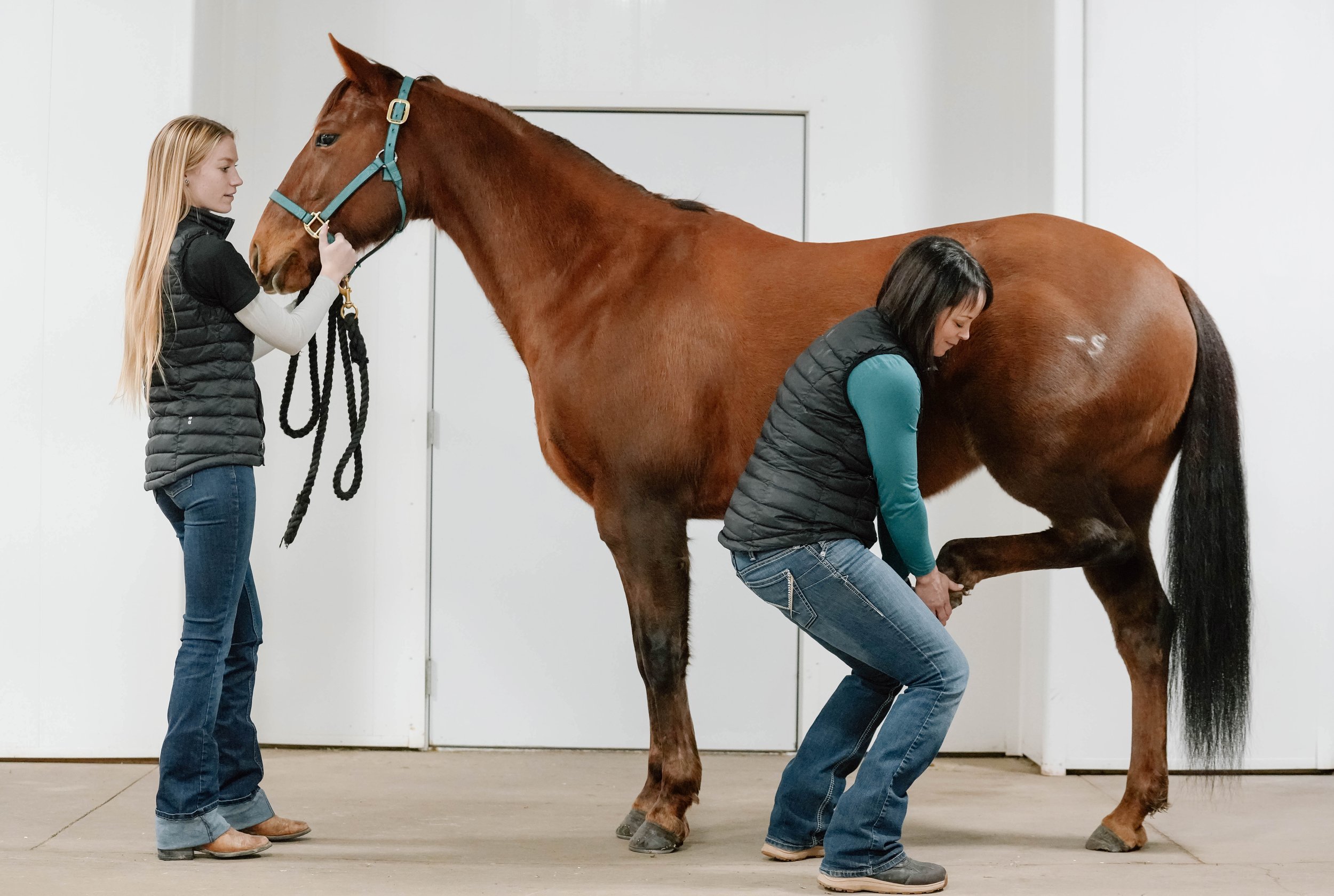Performance Horse Competition Preparation: Soundness Checks
Late winter/early spring is the time of year when those of us with the competitive urge start planning for the upcoming season of competitions. Top of mind is generally conditioning, schedule planning, and diet to ensure our horses are in peak performance shape come spring. But let’s not forget about the importance of addressing our horses from the inside out to make sure that there aren’t underlying issues that are going to rear their ugly head once competition season arrives. As many of you know, Dr. Penttila competes at a high level on her barrel horse so we’re going to share with you some tips and tricks from our veterinary team on how we keeps her horses in top form. In this post, we will be focusing on soundness exams and the benefits of frequent, objective examinations to help identify potential causes of lameness before they become a serious problem for your horse.
Booking your horse in for a “Lameness Exam” when they are not lame may seem counter-intuitive but has some real benefits for setting you and your horse up for success in their competitive season. Re-framing this exam as more of a “Soundness Exam” can be helpful in defining that our aim should be to help maintain soundness and prevent lameness before it is causing any issues. The benefit of pre-season soundness exams and mid-season check-ups cannot be understated. Our examinations include a thorough assessment of your horse from tip of the nose to the tail and they can help to identify any underlying stiffness, soreness, or asymmetry that may predispose your horse to a more serious lameness issue down the line. Just like vaccinating your horse for tetanus before they have a wound will help to prevent serious disease, a soundness exam as part of their preventative health maintenance will ensure that we are addressing any small musculoskeletal issues before they cause lameness to keep your horse performing their best. A pre-season soundness exam may include the following:
Assessment of conformation: Certain conformation abnormalities can predispose your horse to hoof defects, soft tissue injuries, or joint disease. Identification of these abnormalities and their severity early on can be beneficial to limit effects down the line.
Musculoskeletal palpation – static & dynamic: Areas of stiffness or soreness, even slight swelling/heat, or decreased range of motion can be clues that a joint or soft tissue is affected by some disease or pathology before it is causing lameness. Early detection can often mean that we are treating with less invasive therapies before more extreme interventions are required.
Dynamic examination – A dynamic motion exam of your horse at each gait and on different surfaces (hard ground versus soft ground) can reveal even slight asymmetries that can predispose to more serious lameness. We can also utilize the Lameness Locator (an objective gait evaluation tool) to identify asymmetries before they are evident to the human eye, characterize the lameness based on its exact timing within the horse’s stride, and track any subtle changes in motion over time. This type of objective evaluation will give you peace of mind that your horse is moving their best or identify small asymmetries before they become performance limiting lameness.
For more information on the Lameness Locator please visit this section of our website: https://www.burwashequine.ca/lameness-locator
Flexions – Flexion tests are used to help identify areas that are affected by pain and inflammation either before they are causing lameness or after lameness has been noted to help localize the lameness in the limb. The limb is held in a flexed position for a short period of time before assessing the horse trot away. A slight change of gait from which the horse returns to normal right away may not be of significant concern, but any notable change in gait after flexion is likely an indication that we have more significant underlying joint or soft tissue disease present which we can then further assess through imaging, nerve blocks, or treatment trials.
In the process of this thorough assessment of your horse, areas of concern may arise such as: hoof imbalances, muscle stiffness or soreness, “sided-ness” or lack of lateral bend one direction, lack of engagement of the hind end, mild lameness or asymmetry, or lameness only under specific circumstances (after flexion or only on certain surfaces). Based on what is identified, the veterinary team at Burwash Equine Services can then help to create a plan to address any small abnormalities for your performance season which may include potential preventative care including therapeutic farriery, specific stretching/physiotherapy, oral joint supplements, regenerative laser therapy, injectable joint support, or early treatment of joint disease such as joint injections with regenerative medicine therapies like Pro-Stride. We are lucky to work with a team of local equine therapists and farriers who can help to ensure that your “whole horse” is cared for from tip of the nose to tip of the tail and they keep performing their best despite any small issues that may arise. If you are wanting to be best prepared for the competition season before it arrives, a pre-season soundness exam is often the first step in ensuring your horse’s success!


